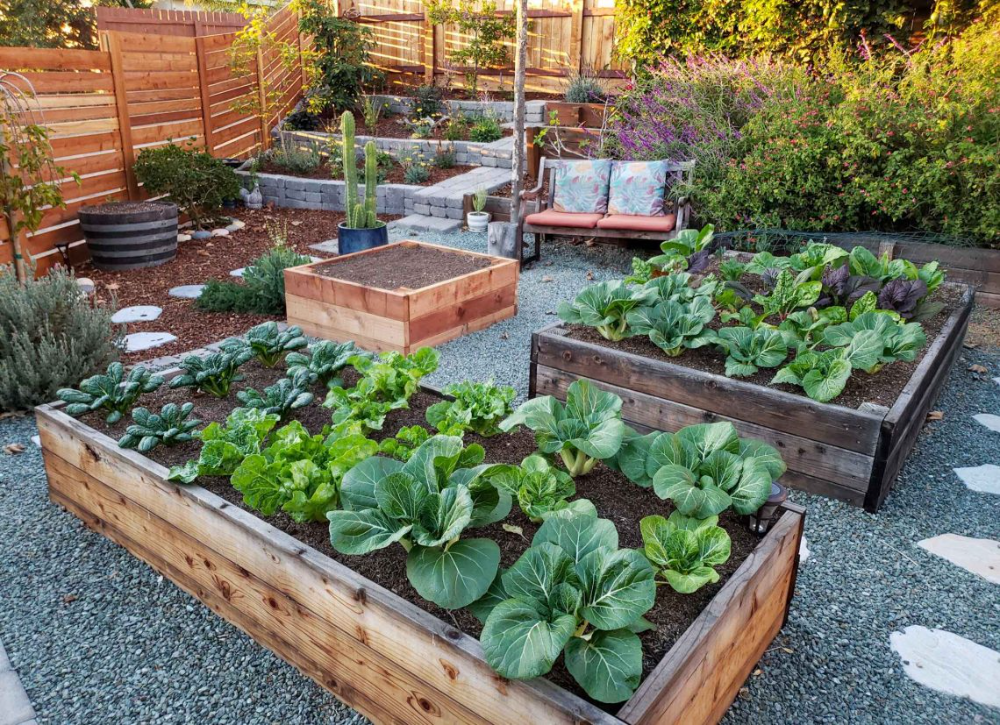Raised garden beds provide the ideal environment for growing fruits, vegetables, herbs and flowers. The contained space lets you control the soil quality and drainage while the heightened structure reduces back strain when tending plants
When planning a new raised bed, choosing the right material is key to creating a growing space that’s both functional and beautiful. The material affects durability, cost, aesthetics and even how well your plants will thrive
Here is an overview of five of the best materials for DIY and prefabricated raised garden beds
1. Cedar Wood
Cedar is a top choice for its strength, natural beauty and rot-resistance. The high oil content preserves the wood and deters insects. Left untreated, cedar beds can last over a decade. It’s lightweight and easy to work with for DIY projects. Redwood, cypress and hemlock also make good wood options.
Benefits
- Naturally rot-resistant
- Lightweight yet strong
- Easy to build with
- Has a beautiful reddish hue
Considerations
- On the pricier side
- Requires periodic maintenance
- Not as durable as steel or stone
2. Metal and Steel
Black metal raised beds have clean lines and last for many years. Powder-coated steel comes in any color. Or opt for weathering steel like Corten which develops a stable rusted patina. Stainless steel is very durable but expensive.
Benefits
- Extremely strong and durable
- Thin sides maximize growing space
- Powder-coated color won’t fade or peel
- Steel warms up soil quickly in spring
Considerations
- Can be very heavy, hard to move
- Prone to scratching
- Can get too hot for plants in full sun
3. Stone
Stone is the longest-lasting raised bed material and comes in endless styles. Dry stack stone or mortar it for permanent beds. Use native fieldstone or cut stone like granite or limestone. Great for formal and cottage garden designs.
Benefits
- Extremely durable, lasts generations
- Natural material won’t leach chemicals
- Looks beautiful in any garden style
- Stays cool in summer heat
Considerations
- Heavy, may require equipment to install
- Most expensive option
- Mortared beds can crack as ground shifts
4. Concrete Blocks
Standard cinder blocks are very affordable and widely available. Their modular design makes it easy to create beds of any shape and size. Paint them bright colors for a cheerful flair.
Benefits
- Budget-friendly for large gardens
- Easy to build and reconfigure
- Sturdy and long-lasting
- Take paint or stains well for custom looks
Considerations
- Plain blocks lack aesthetic appeal
- Can leach lime and minerals over time
- Difficult to move once assembled
5. Brick
Brick is classic and charming for raised beds. Salvaged brick has character. New brick comes in endless colors. Use mortar for permanent beds or dry stack. Add crushed stone footings for better drainage.
Benefits
- Timeless, attractive look in any garden
- Available widely at affordable prices
- Can be configured for curves or geometric patterns
- Easy to update appearance just by repointing mortar
Considerations
- Drainage poorer than open materials like wood
- Mortared beds prone to cracking over time
- Dry stacked beds more temporary, can shift
Key Tips for Choosing the Best Raised Bed Material
-
Consider your climate. In hot regions, wood or metal beds may overheat plants. Stone and concrete maintain cooler soil temperatures.
-
Match the material and color to your home’s existing aesthetic for a cohesive look.
-
Maximize small spaces with thin-profile steel beds or vertical DIY stacking planters.
-
Account for size and weight. Some materials like stone require heavy equipment to install.
-
For food gardens, avoid treated lumber which can leach chemicals. Untreated cedar and redwood are safest.
-
Get creative combining materials like cinder blocks with wood caps or edging.
-
Convenience matters. Prefabricated beds or lightweight materials allow for easy rearranging.
By thoughtfully selecting the right material for your needs and environment, you can create raised garden beds that are a joy to plant in and will stand the test of time. Let the fun materials available spark ideas to make your landscape visions a reality.
Best Materials for Raised Garden Beds
What is the best building material for a raised bed?
The traditional raised bed building material is wood, and for good reason. Wood results in an attractive raised bed that will blend in perfectly with the natural garden setting. It’s perhaps the most versatile too – wood can be easily cut to size and requires only the most rudimentary of building skills to throw it together.
Which Wood is best for a garden bed?
Choose untreated lumber, such as rot-resistant cedar, cypress, or black locust. Untreated cedar wood is a favorite for garden beds, says Megh Wingenfeld, a home and garden creative. “It’s not full of chemicals, it’s a natural insect repellent, and it’s rot resistant,” she says.
What are the different types of raised garden beds?
Traditional brick raised garden bed: This is the most common type of raised garden bed. It is made by stacking bricks in a rectangular or square shape. Spiral garden: A spiral design garden is a unique and eye-catching raised garden bed. It is made by winding a brick pathway around a central point.
Can you use wood to make raised garden beds?
When you hear “raised beds”, most folks likely conjure up images of wood planter boxes. Wood certainly is a common (and excellent!) choice for garden beds. However, you can use a variety of other materials to make raised garden beds too! What material should I use to make raised garden beds, you wonder?
- The Ultimate Guide to Growing Strawberries in Raised Beds - August 8, 2025
- No-Dig Garden Beds: The Easiest Way to Grow a Beautiful Garden - August 6, 2025
- How to Protect and Preserve Wood for Raised Garden Beds - August 6, 2025

